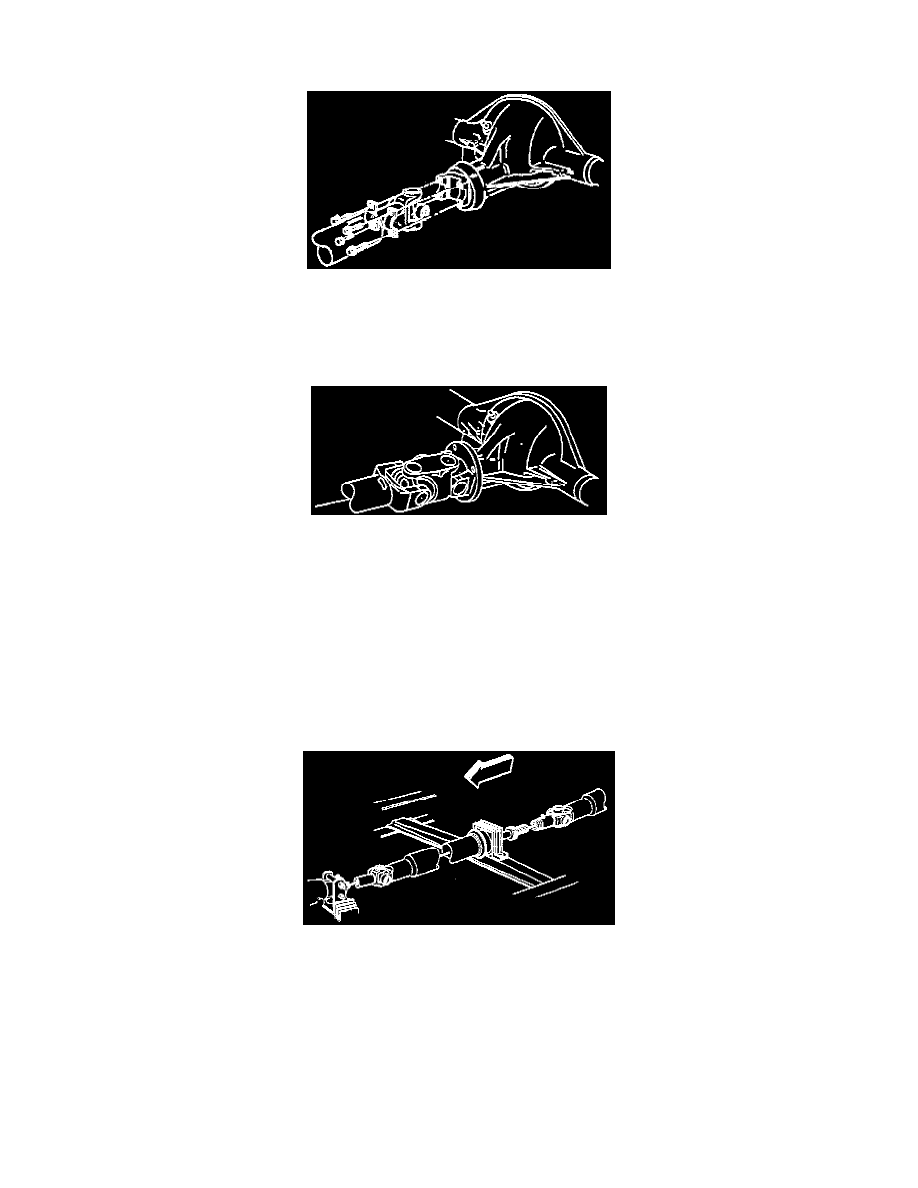Hombre XS Space Cab L4-2.2L CPC (1997)

Drive/Propeller Shaft: Description and Operation
GENERAL DESCRIPTION
The propeller shaft is a steel tube that transmits power from the transmission or transfer case output shaft to the differential.
A single cardan universal joint and splined slip yoke are located at the transmission end of the shaft where they are held in alignment by a bushing
in the rear of the transmission. The slip yoke permits fore and aft movement of the propeller shaft as the differential assembly moves up and down.
The spline is lubricated internally by transmission lubricant. An oil seal prevents leakage and protects the slip yoke from dust, dirt, and other
harmful material.
A double cardan joint consists of two single joints connected by a special link yoke. A ball and socket centering device is located between the
crosses to maintain their relative positions, causing each cross to divide one half of the total angle across the joint equally. Virtually all problems
with propeller shafts, caused by universal joint angles, are eliminated by use of the double cardan joint. The rear of each propeller shaft if attached
to the differential assembly by a double flange with four bolts.
A second universal joint is used where the propeller shaft flange mates with the pinion flange.
A service kit which consists of a spider with bearing assemblies and snap rings must be installed on the vehicle if a rear universal joint becomes
worn or noisy. If it becomes necessary to repair a universal joint, the entire propeller shaft must be removed from the vehicle. Avoid jamming,
bending or over-angulating any parts of the propeller shaft assembly.
If a vehicle is to be undercoated, the propeller shaft must be kept completely free of undercoating material. Undercoating material or any other
foreign material will affect the propeller shaft balance, and produce serious vibrations.
Phasing
The propeller shaft is designed and built with the yoke lugs (ears) in line with each other. This design produces a smooth running shaft, and is
known as "in phase".
An out-of-phase propeller shaft can cause vibration. The propeller shaft will generate vibration from speeding up and slowing down each time the
universal joint turns. This vibration would be the same as a person snapping a rope and watching the "wave" reaction flow to the end. An in-phase
propeller shaft would be similar to two persons snapping a rope at the same time, and watching the "waves" meet and cancel each other out. A
total cancellation of vibration produces a smooth flow of power in the driveline. Since the phasing of a propeller shaft is formed between the front
and center universal joints, it is very important to reference mark the front and rear propeller shafts before removal to ensure proper phasing upon
installation. Some splined shaft slip yokes are keyed to ensure proper phasing.
